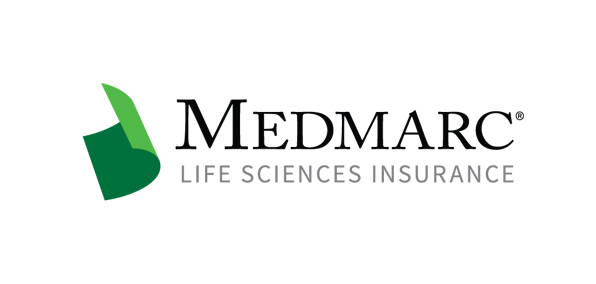Human Tissue Products
Products or product components that are composed of human cells and tissues, such as stem cells, are at the forefront of medical technology. They may also receive unique treatment under federal law, a factor that ultimately can have a significant impact on whether they are covered under many products liability insurance policies. Specifically, these types of products will fall into one of two broad categories and corresponding regulatory frameworks. First, they may be classified as biologics, drugs, and/or devices─and will thus be subject to burdensome FDA regulations but are likely insurable as traditional life sciences products. Or, they will be classified as human cells, tissues, and cellular and tissue-based products (HCT/Ps) under the Public Health Service Act, in which case they may be treated differently from traditional life sciences products under some insurance policies.
HCT/Ps include things like bone, skin, ligaments, stem cells, semen, and oocytes. Under federal law (21 CFR 1271), tissue products must meet certain limitations in order to be considered HCT/Ps and to avoid falling into the traditional but more burdensome biologic, drug, and/or device classifications.1 An important, yet confusing, consideration in making this determination is the degree of manipulation the tissue undergoes between the recovery from the donor and transplantation into the recipient. Products must be only “minimally manipulated” in order to be regulated as HCT/Ps. Minimal manipulation is defined for structural tissue, like bone, as “processing that does not alter the original relevant characteristics of the tissue relating to the tissue's utility for reconstruction, repair, or replacement.” For cells and nonstructural tissues, like semen and oocytes, minimal manipulation is defined as “processing that does not alter the relevant biological characteristics of cells or tissues.” 21 CFR 1271.3(f).
How can one determine which activities are beyond the bounds of minimal manipulation? Consider each of the processing steps taken between recovery and transplantation. “Processing” is defined as “any activity performed on an HCT/P, other than recovery, donor screening, donor testing, storage, labeling, packaging, or distribution, such as testing for microorganisms, preparation, sterilization, steps to inactivate or remove adventitious agents, preservation for storage, and removal from storage.” 21 CFR 1271.3(ff). Does any of the processing steps alter the tissue’s relevant characteristics?
For example, consider bone tissue, which is structural and thus must bear the same “original relevant characteristics” with regard to its usability in “reconstruction, repair, or replacement.” Bone tissue can be shaped to fit its new intended location or given threads to act as a screw without affecting the structural integrity of the bone. However, what about bones that are ground into powder and used for ridge preservation after a tooth extraction? Here, the bone powder has been sufficiently altered to exceed the bounds of minimal manipulation.
For non-structural tissue, such as a hematopoietic stem cell, the question is whether the “relevant biological characteristics,” like cell proliferation, have been altered. If the cells are selected for use in repopulating the patient’s bone marrow, this would be in keeping with the cell’s original biological characteristics. However, if the cells were recovered from the donor and grown in media culture in a laboratory to create an extensive bank of cells, what is known as “expansion,” then this processing of the tissue would be considered to have exceeded the bounds of minimal manipulation.2
When a product has exceeded the bounds of minimal manipulation and can no longer be regulated as an HCT/P, then it is subject to the rules and regulations of drugs, biologics, or devices – whichever is appropriate for the end product. Take the cultured cells in our last example; this product would likely be regulated as a biologic whereas the bone powder used in our example of dental grafting would be considered a device. This determination affects not only the assignment of the FDA center responsible for oversight of the product, but also the necessary regulatory pathway to market, including the type of premarket notification or approval that will be required.
Companies are often surprised to learn that this regulatory determination can affect how the product is treated by insurers. Some insurers exclude coverage of HCT/Ps, whether explicitly or by omitting HCT/Ps from the list of covered products. It is important to consider how your specific product and its stage of development will be treated under a policy’s terms. Consider not only how your product will be regulated, but also whether you are seeking products or clinical trial coverage. Your insurance broker is an excellent reference in creating a coverage plan, and Medmarc’s experienced underwriting team is a willing partner in ensuring that you understand and can access the coverage that best suits your needs.
---------------------------------------------------------------------------
1See 21 CFR 1271.10(a) for complete criteria necessary for consideration as an HCT/P.
2See FDA’s Minimal Manipulation of Human Cells, Tissues, and Cellular and Tissue-Based Products: Draft Guidance, December 2014
For additional resources contact the Marketing department
Phone: 888-633-6272
Medmarc is a member of ProAssurance Group, a family of specialty liability insurance companies. The product material is for informational purposes only. In the event any of the information presented conflicts with the terms and conditions of any policy of insurance offered from ProAssurance, its subsidiaries, and its affiliates, the terms and conditions of the actual policy will apply.
Copyright © 2026 - Medmarc
